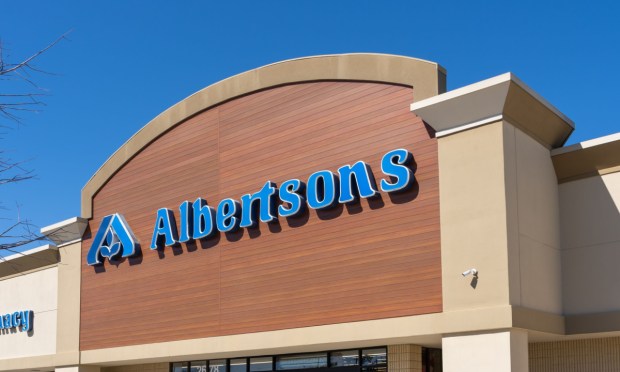
Albertsons is seeing consumers’ financial pressures, compounded by the reduction of government benefits, take a toll on their grocery budgets.
The grocery giant, which has more than 2,200 locations, shared in its earnings results news release Tuesday (Oct. 17) that it is feeling the impact of these cuts.
(The company has declined to hold earnings calls since its merger with Kroger was announced a year ago.)
“As we look ahead to the balance of the year, our focus remains the same — advancing operational excellence in our stores, driving growth in our digital and pharmacy operations, and deepening our relationships with our customers,” CEO Vivek Sankaran said in the release. “We are also mindful of a more challenging economic backdrop, including declining federal and state government assistance and higher interest rates, and their effects on consumer spending and our business.”
Between cuts to the Supplemental Nutrition Assistance Program (SNAP), removing about $90 a month from the average recipient’s benefits, to the resumption of federal student loan repayments, many are feeling the pressure.
PYMNTS Intelligence’s study “Consumer Inflation Sentiment Report: Back to School Means Back to Federal Loan Repayments,” which drew from a June survey of more than 2,200 U.S. consumers, revealed that 54% are at least slightly concerned about student loan payments resuming. Plus, among student loan recipients who are concerned, 35% said that their ability to afford everyday expenses such as groceries will be impacted.
Grocery inflation has slowed, having fallen from double-digit year-over-year figures last year to 2.4% in September, according to U.S. Bureau of Labor Statistics (BLS) Consumer Price Index (CPI) data reported Thursday (Oct. 12).
Yet consumers do not feel this slowing of inflation so much as they feel the compounded impacts of years of price increases. A PYMNTS Intelligence survey of more than 2,100 U.S. consumers found that consumers estimate that they pay 23% more at the grocery store on average than they did a year ago — a figure that is close to the amount prices have increased since 2019.
Many consumers are finding it difficult to afford their groceries, turning to alternative payment methods to afford the food they need. PYMNTS Intelligence’s report “Installment Plans Becoming a Key Part of Shopper’s Toolkit, created in collaboration with Splitit, noted that roughly 1 in 5 consumers have used some type of installment payment plan to purchase groceries in the past 12 months.
Kroger is also feeling the impact of reduced government benefits, according to the company’s most recent earnings call.
“The effects of sustained inflation, reduced government benefits including SNAP and higher interest rates have pressured customer spending, especially for those on a tight budget,” CEO Rodney McMullen said last month. “… These customers are buying in smaller pack sizes, [at] times prioritizing the lowest shelf price, … building smaller baskets and switching to lower-priced items to stretch their budgets.”
PYMNTS Intelligence’s “Consumer Inflation Sentiment Report: Consumers Cut Back by Trading Down,” which drew from a spring survey of more than 2,000 U.S. consumers, found that the most common cutback grocery shoppers make is reducing nonessential grocery spending, followed by switching to lower-priced merchants. A smaller share reported trading down from their favorite brands to lower-quality products.